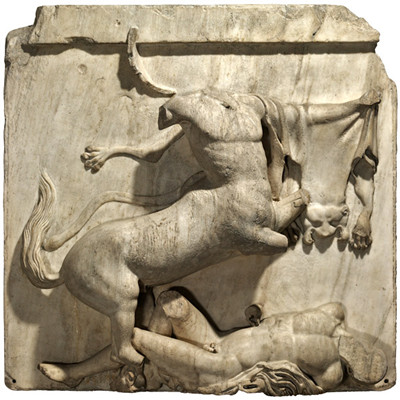Around 1800, Lord Elgin removed some of the sculptures from the ruins of the Parthenon in Athens, and a few years later put them on public show in London.
1800年左右,驻奥斯曼帝国的英国大使埃尔金伯爵从雅典帕台农神庙遗址带走了一些石雕,几年后在伦敦进行了公开展览。
For most western Europeans it was the first time they had ever been able to look closely at Greek sculpture, and they were overwhelmed and inspired by the breathing vitality and the beauty of these works.
对大多数西欧人来说,这是他们第一次近距离接触希腊雕刻,不由被它们的魅力深深折服。
But in the 21st century, the Elgin Marbles, as they've long been known, are famous less as art objects than as objects of political controversy.
到了二十一世纪,这些被称为埃尔金大理石雕的艺术品,其艺术特色被淡化,更多地成为政治争端的焦点。
For most people today, the Parthenon sculptures in the British Museum provoke only one question:
对今天的大部分人来说, 提到大英博物馆的帕台农雕像,只会想到一个问题:
should they be in London or in Athens? The Greek government insists they should be in Athens; the British Museum's Trustees believe that in London they're an integral part of the story of world cultures.
它们该保存在伦敦还是雅典?希腊政府坚持认为它们应归还雅典,但大英博物馆的理事们则认为应留在伦敦,因其属于世界文化不可分割的一部分。













